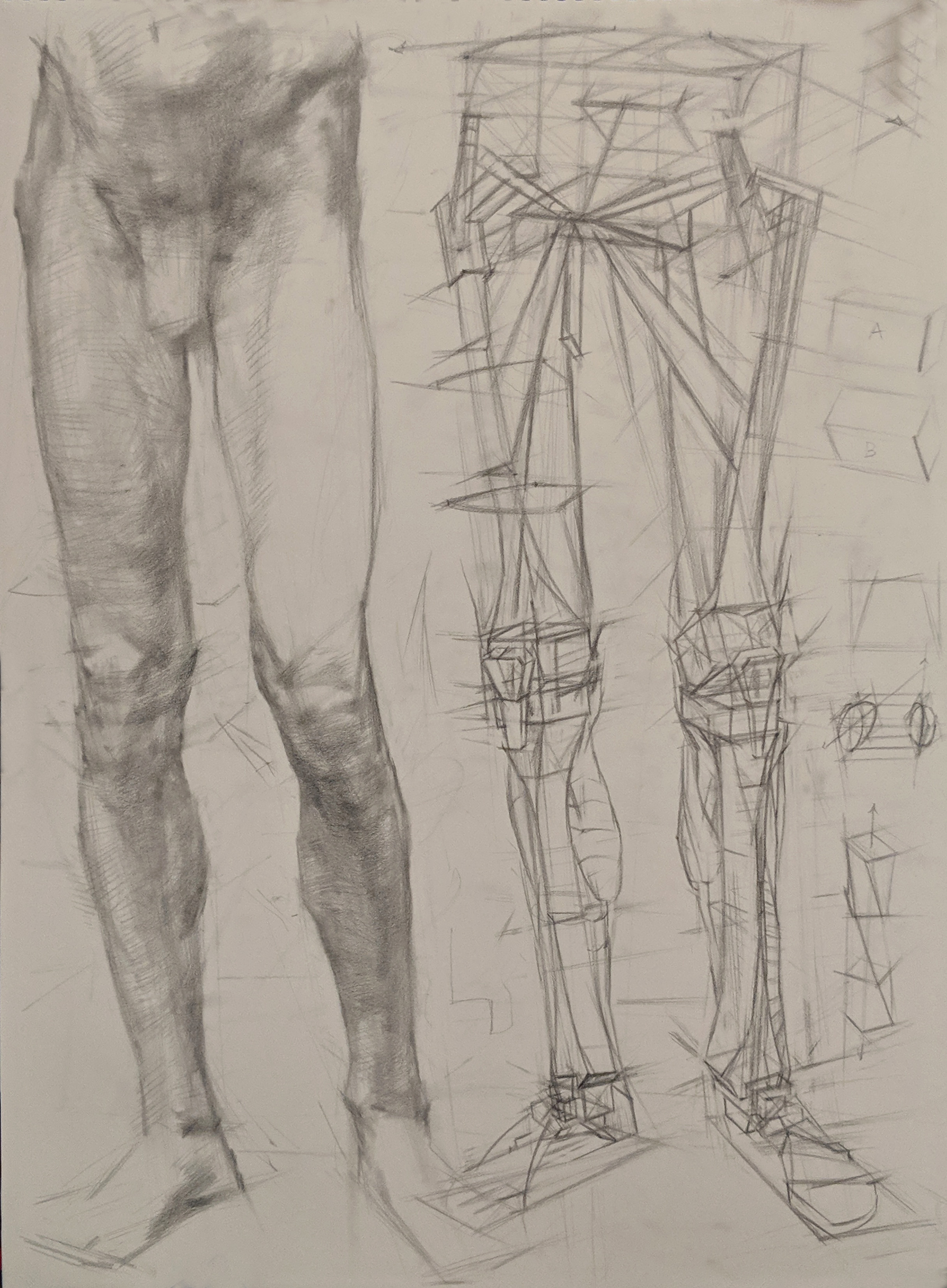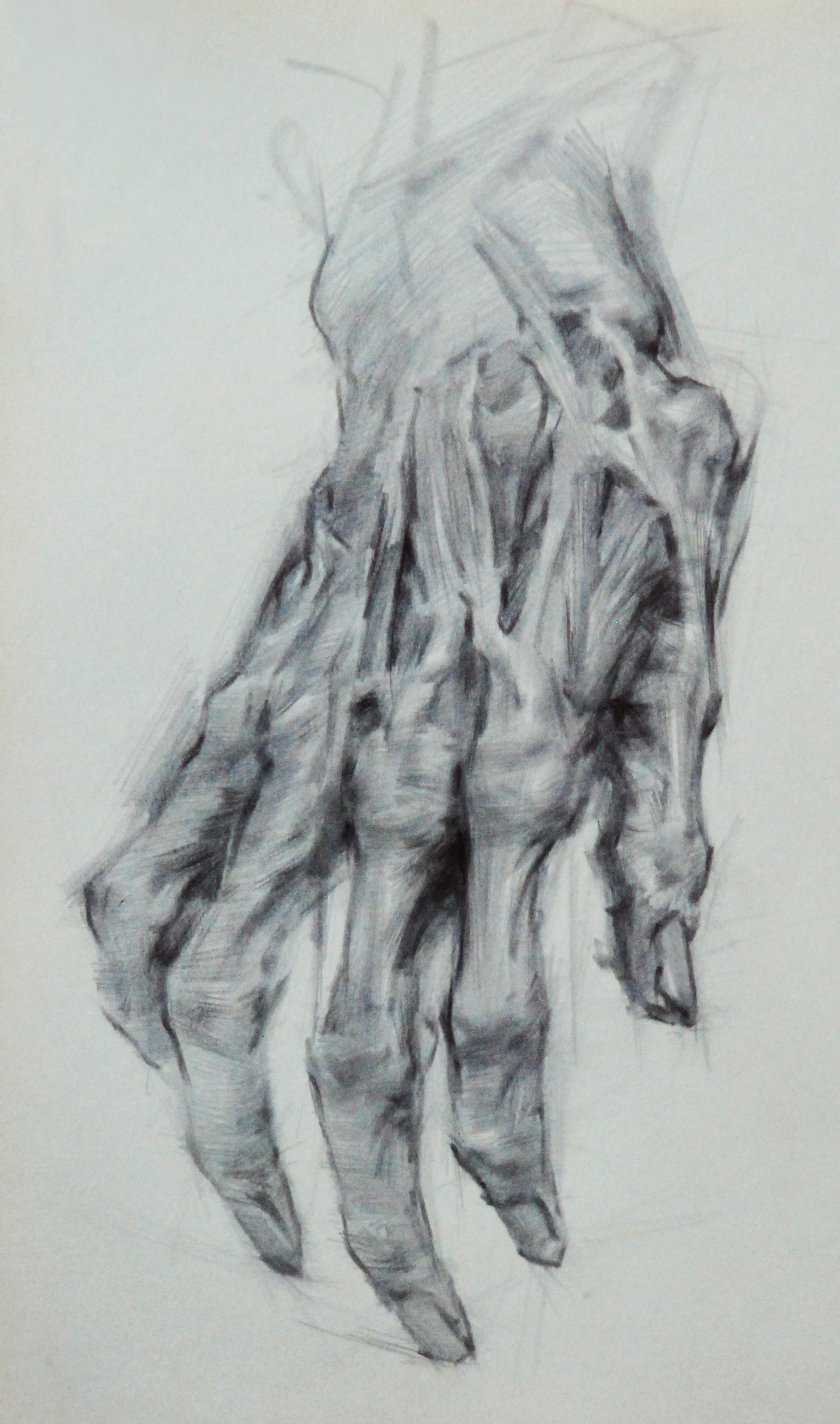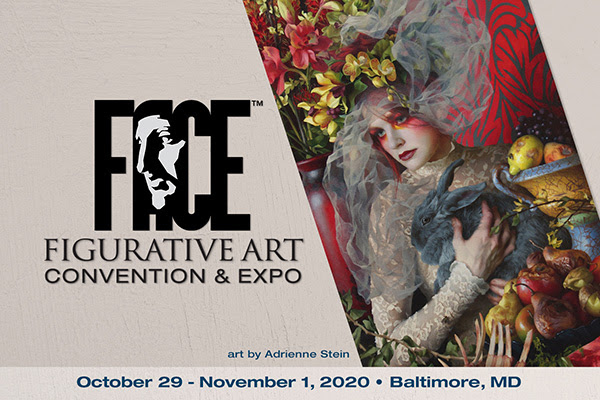When the Art Students League of New York presented a workshop titled Musculoskeletal Gross Anatomy for the Figurative Artist, students had the unprecedented opportunity to study from real human cadavers and prosections from the Cornell College of Medicine’s anatomy lab and develop detailed anatomical knowledge for figure drawing.
This course presented the study of anatomy as a convergence between anatomical and structural drawing. Students worked toward achieving greater biological clarity in their drawing studies while experiencing a new appreciation for human construction.
The workshop was taught by the Art Students League’s Dan Thompson, who was awarded the Grand Prize for Best of Show in the American Society of Portrait Artist’s International Portrait Competition at the Metropolitan Museum of Art in New York for his figurative drawing work. Thompson has also on the faculty for the Figurative Art Convention (FACE) (the next FACE is October 29-November 1, 2020 in Baltimore, MD).

Figure Drawing Q&A
Cherie Dawn Haas: What are the benefits of drawing cadavers?
Dan Thompson: The benefits of drawing cadavers are many — the most prescient for this interview is that cadaver drawing offers students of the figure unparalleled opportunities to move past the anatomy book. In a very personal sense, students can build up their own aptitudes of what the inner figure entails, from first-hand exploration.
Drawing from cadavers differs from drawing the living model in many respects. Drawing the living figure is, fundamentally, a chance to capture a sense of presence and animated personality, as in a pose. In the business of teaching drawing, I call this “gesture.” It is a very individualized practice. While cadavers lack the characteristic of gesture, there is a nearly fantastical appreciation of the form sense, layer by layer. The study of the threading and composition of human form is an inexhaustible source of learning.
CDH: What does one learn from this experience?
DT: The experience teaches students several important figure drawing lessons. First is the unique convenience of feeling the forms of the body move in three dimensions. Second, there is the nature of how these forms have been categorized, organized into doctrine and traditions of study — in various texts on artistic anatomy from all over the world and throughout history. Third, there is so much variation from person to person. When faced with this third aspect, it’s impressive that we have anatomy books in the first place.

CDH: Please tell us what the atmosphere is like, and explain the proper etiquette.
DT: I consider the laboratory a library of human tissue. As artists, ours is an aesthetic science. It’s important to remember that we are investigating concepts of beauty, many of which combine into an idealized figure, which doesn’t exist. Every student in the laboratory seems to absorb this almost instinctively, which makes the atmosphere one of awe.
CDH: How would someone find this resource in their own area so they can improve their own figure drawing through a similar workshop?
DT: I do not know of any such opportunity that is open to art students in the New York City area. This arrangement is extremely rare.
CDH: Anything else you’d like to add?
DT: I want to add the impression that I first had to drawing from deceased human beings — one that my students and colleagues all know about (which may shed an interesting light on this interview for those who haven’t participated in an opportunity of this type). I walked away with the distinct and unshakable impression that we are all spirit. The individual is entirely ethereal and intangible. The container is beautiful and must be well understood — and it is part of a comprehensive education in the art of drawing.
Join us at the 4th Annual Figurative Art Convention & Expo, October 29-November 1, 2020, in Baltimore, Maryland.





